#Florida pollinators
Text
These Colorful Little Hoverflies are Also Great Pollinators
Northern Plushback
One of the pollinators that I’ve been seeing lately that I was not familiar with is the pretty little northern plushback (Palpada vinetorum). It’s a type of hoverfly that is found in the eastern United States and Texas. It’s especially common in coastal or near coastal areas. The adults feed on nectar and prefer to go directly onto or into the corolla of the flower. The hairs…

View On WordPress
#colorful flies#colorful insects#flies#Florida flies#Florida insects#Florida pollinators#fly photographs#hoverflies#insect photographs#insect photography#insects#northern plushback#northern plushback fly#photography#pollenators#pollinating insects#small flies#small insects#spring insects
2 notes
·
View notes
Text
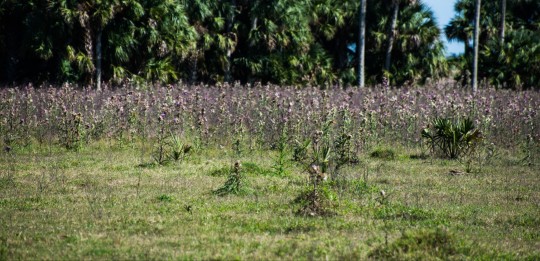
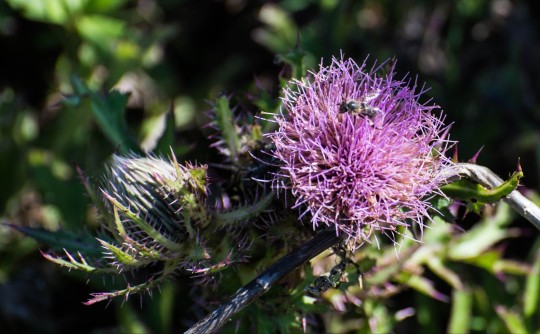

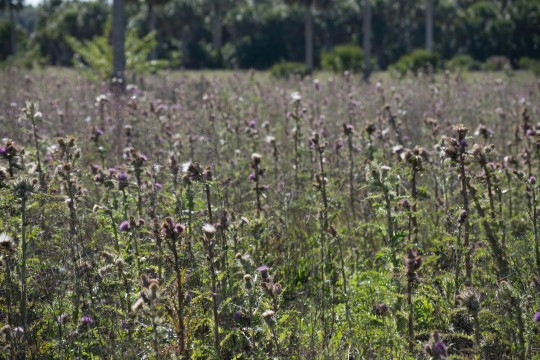
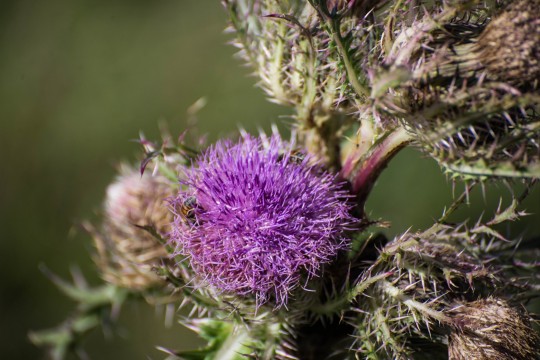
A giant field of thistle buzzing with pollinators
#photography#nature#original photographers#photographers on tumblr#florida#thistle#flowers#pollinators#bees
23 notes
·
View notes
Text
One thing I've found important but also sometimes difficult to learn is that the difference between a 'butterfly garden' and a 'biodiverse habitat' is that you gotta accept that sometimes things are gonna die.
This isn't to say that you shouldn't try to tend to things. If I find a bunch of oleander aphids harassing some of my young milkweed plants, I'll get the hose and spray them off no problem--hard to tend a garden and save milkweed seeds if they're getting the life sucked out of them before they can even go to seed. If I see a lot of snails starting to devour some of my flowers and turn them into brown mush, I'll pick them off and toss them to the neighborhood ducks.
But with that being said, creating a biodiverse environment for wildlife means there's gonna be prey animals and predator animals, and some insects may fill several niches. I plant milkweed and other flowers so monarchs and other insects can enjoy them as a host plant and a nectar source. Some years, I can barely even find large caterpillars because the wasps just go ham and pig out. That doesn't mean I'm gonna hunt down any and every wasp nest and spray it to death for being oh-so-mean to my precious baby caterpillars! They're just trying to survive, just like everything else in my garden!
And in the grand scheme, everything is part of a cycle that feeds everything else. The caterpillars feed the wasps, which then feed the cardinals and chickadees and mocking birds. Later in the summer, I always see some ladybugs, and my aphid problems drop even without me bringing out the hose. Sure, the snails are a major problem for me, right now. But they might be feeding things I'm not even seeing, late at night--like blindworms, or possums, or frogs, and maybe even the birds are going at them when I'm not outside.
The literal basis of my pollinator garden is so things can eat other things--the caterpillars feed on the milkweed, after all. I can't deny that they're part of an ecosystem, and the effort in trying to just sprays poisons everywhere for no real reason.
If I really wanted to, I could try and collect every single tiny little baby caterpillar and keep them in a little container, so I can rear them by hand, if it hurts too much to think of them getting eaten by wasps. My next door neighbor did that. Brought in 26 caterpillars to protect them from outside enemies, and promptly ran out of milkweed. Out of all that, only maybe 10 tops made it. And the instant she set out her stripped-bare plants again, there were already more monarchs coming in and laying seeds on the stems of plants that just barely were starting to leaf back out.
Nature's a balancing act. Monarchs have been dealing with pests like wasps through all this time. Every time I wonder where the caterpillars are, I sure can still find a few dozen eggs on my plants. Butterflies are still dropping by, still laying tons of eggs on my plants. And it's not like I go out there five times a day to count caterpillars--for all I know, there could still be dozens of those little guys growing up where I don't even see them.
I feel like I'm losing my point. Long story short, if wasps are eating some caterpillars in my backyard, I'm not gonna lose my mind. I want my garden to be part of a wider ecosystem, not a members-only club.
#ani rambles#out of queue#pollinator gardening#'but Ani if you don't mind things dying in your garden why are you killing snails' I spent MONEY on those plants#and they're always my non-milkweed favorites they're going after!!!#coneflowers rudbeckias zucchini squash foxglove I'm not allowed to have nice things because of those fuckers#am I being a bit unfair to them???? maybe#but also you try picking off 100 goddamn snails from your fuckin flowers after a rainy day and see how you feel#'ani make your garden less moist to handle the snail problem' I live in FLORIDA#if I don't water things'll bake OR it'll just rain anyways for three days straight and all of a sudden my rudbeckias are dead#I need to attract some goddamn snail eating frogs but until then im putting them in a bucket and feeding them to#the ducks that live in my neighborhood
43 notes
·
View notes
Photo

Honey bee (Apis) on a Sea Lettuce Tree (Scaevola taccada)
Taken at Pineapple Park in Melbourne, FL
#honey bee#honey bees#bee#bees#insect photography#insects#insect#pollinator#pollinators#plant#plants#plant photography#flower#flowers#flower photography#nature photography#photography#florida#florida photography#florida photographer#nikon photography#nikond3500#wildlife
14 notes
·
View notes
Text

Have you taken time to appreciate the bees today?
Western honey bee (Apis mellifera)
Tampa, Florida
June 2022
#nature#florida#florida wildlife#bugblr#bugs#naturalists#plants#entomology#hippie#save the bees#honeybee#apis mellifera#bumblebee#pollinators#pollination#flowers#western honey bee#nature photography#photography
35 notes
·
View notes
Text
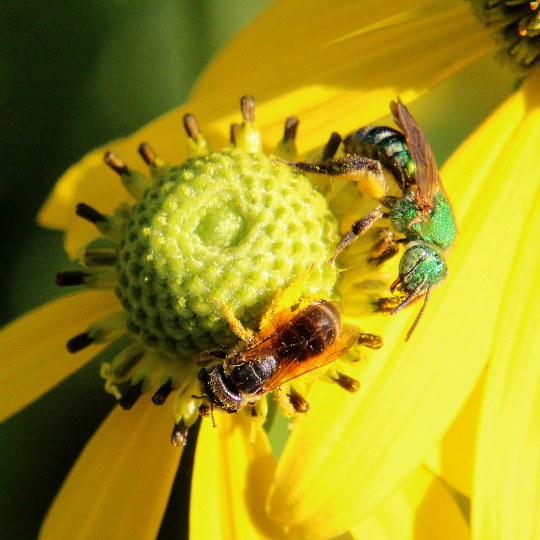
Photo: LDeans
2 notes
·
View notes
Text
Happy lil pollinator 🌼🐝


#save the bees#bees#mexican sunflower#florida garden#swflorida#pollinating#pollinators#mother nature
2 notes
·
View notes
Text

#passion fruit#passiflora#may pop#passion flower#Florida#Tampa#Tampa bay#tropical#tropical fruit#pollinating#fruit#Spotify#passiflora edulis#passionfruit#Zone 10A
0 notes
Photo
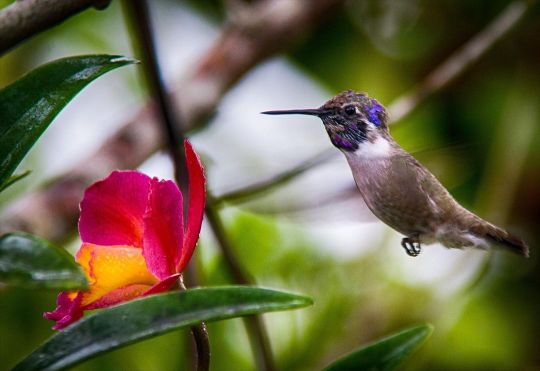
a kernel of exotic air somehow ripened in this conservatory sterile life confined and blossomed under glass unrefined essence of beauty captured stark contrast to black and white scent of seasonal spices rich colors intoxicating senses undeniable starving eyes dip to taste feasting without restraint ravenous uninhibited savory sauces tenderly consumed until naked lust obsolete ~ #HummingBird #🪶#BirdsOfAFeather #FloatingOnAir #Pollinator #Nature #plant #nature #flower #🌸 #Summer #ComeExploreWithMe #FairchildTropicalBotanicalGarden #FTBG #CoralGables #Miami #Florida #PoemOfTheDay #poetry #📝📆 #PictureOfTheDay #PhotoOfTheDay #📷📆 #CTSelf (at Fairchild Tropical Botanic Garden) https://www.instagram.com/p/Ch-2H6Tu_AC/?igshid=NGJjMDIxMWI=
#hummingbird#🪶#birdsofafeather#floatingonair#pollinator#nature#plant#flower#🌸#summer#comeexplorewithme#fairchildtropicalbotanicalgarden#ftbg#coralgables#miami#florida#poemoftheday#poetry#📝📆#pictureoftheday#photooftheday#📷📆#ctself
0 notes
Text
The Work of Bees Last Fall Leads to Beautiful Flowers Now
The Work of Bees Last Fall Leads to Beautiful Flowers Now discusses the role of last year pollinators in helping to bring us crops and wildflowers this year. It shows readers one of the many types of bees found in Florida.
Eager Bee
Last fall before the first frost, the area was crazy alive with bees. There were many different types of them stocking up on nectar and pollen to get them or their hive or nest through the winter. There were lots of flowers, especially blackjacks, that time of year. This was one of many bees that were buzzing around from flower to flower not only eating, but also carrying pollen…

View On WordPress
#beautiful bees#beautiful insects#bee photographs#bee photography#bees#black bees#black insects#carpenter-mimic leaf-cutter bees#Florida bees#Florida insects#Florida pollinators#insect photographs#insect photography#insects#large bees#leafcutter bees#photography#pollinators#solitary bees
2 notes
·
View notes
Text
The Best News of Last Week - March 13, 2023
🐝 - Did you hear about the honeybee vaccine? It's creating quite the buzz! But seriously, it's a major breakthrough in the fight against American foulbrood and could save billions of bees.
1. Transgender health care is now protected in Minnesota

Minnesota Governor Tim Walz signed an executive order protecting and supporting access to gender-affirming health care for LGBTQ people in the state, amidst Republican-backed efforts across the country to limit transgender health care. The order upholds the essential values of One Minnesota where all people, including members of the LGBTQIA+ community, are safe, celebrated, and able to live lives full of dignity and joy.
Numerous medical organizations have said that access to gender-affirming care is essential to the health and wellness of gender diverse people, while states like Tennessee, Arizona, Utah, Arkansas, Alabama, Mississippi, South Dakota, and Florida have passed policies or laws restricting transgender health care.
2. First vaccine for honeybees could save billions
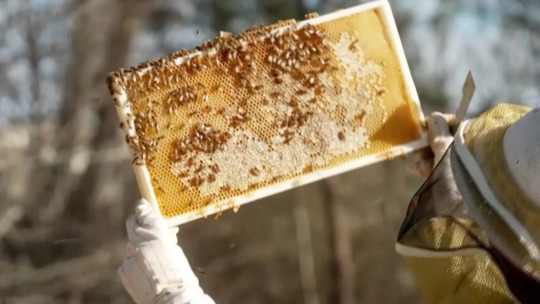
The US government has approved the world's first honeybee vaccine to fight against American foulbrood, a bacterial disease that destroys bee colonies vital for crop pollination.
Developed by biotech company Dalan Animal Health, the vaccine integrates some of the foulbrood bacteria into royal jelly, which is then fed to the queen by the worker bees, resulting in the growing bee larvae developing immunity to foulbrood. The vaccine aims to limit the damage caused by the infectious disease, for which there is currently no cure, and promote the development of vaccines for other diseases affecting bees.
3. Teens rescued after days stranded in California snowstorm: "We were already convinced we were going to die"

The recent snowstorms in California have resulted in dangerous conditions for hikers and residents in mountain communities. Two teenage hikers were rescued by the San Bernardino County sheriff's department after getting lost in the mountains for 10 days.
The boys were well-prepared for the hike but were not prepared for the massive amounts of snow that followed. They were lucky to survive, suffering from hypothermia and having to huddle together for three nights to stay warm.
Yosemite National Park has had to be closed indefinitely due to the excessive snowfall.
4. La Niña, which worsens Atlantic hurricanes and Western droughts, is gone

The La Nina weather phenomenon, which increases Atlantic hurricane activity and worsens western drought, has ended after three years, according to the National Oceanic and Atmospheric Administration. That's usually good news for the United States and other parts of the world, including drought-stricken northeast Africa, scientists said.
The globe is now in what's considered a "neutral" condition.
5. Where there's gender equality, people tend to live longer

Both women and men are likely to live longer when a country makes strides towards gender equality, according to a new global study that authors believe to be the first of its kind.
The study was published in the journal PLOS Global Public Health this week. It adds to a growing body of research showing that advances in women's rights benefit everyone. "Globally, greater gender equality is associated with longer [life expectancy] for both women and men and a widening of the gender gap in [life expectancy]," they conclude.
6. New data shows 1 in 7 cars sold globally is an EV, and combustion engine car sales have decreased by 25% since 2017

Electric vehicles are the key technology to decarbonise road transport, a sector that accounts for 16% of global emissions. Compared with 2020, sales nearly doubled to 6.6 million (a sales share of nearly 9%), bringing the total number of electric cars on the road to 16.5 million.
Sales were highest in China, where they tripled relative to 2020 to 3.3 million after several years of relative stagnation, and in Europe, where they increased by two-thirds year-on-year to 2.3 million. Together, China and Europe accounted for more than 85% of global electric car sales in 2021
7. Lastly, watch this touching moment as rescued puppy gains trust in her new owners
youtube
By the way, this is my newly started YouTube channel. Subscribe for more wholesome videos :D
---
That's it for this week. If you liked this post you can support this newsletter with a small kofi donation:
Buy me a coffee ❤️
Let's carry the positivity into next week and keep spreading the good news!
749 notes
·
View notes
Text
Milkweed Lovers Everywhere, Heed My Warning
By all means let me know if I'm wrong here, but if I'm not wrong then we're looking at a serious (at least to me) problem.
I've been trying to stray away from Tropical Milkweed (Asclepias curassavica) and towards more native species in my area--things like swamp, sandhill, etc--and Butterflyweed (Asclepias tuberosa) fits in that category for me. It's hard to find native milkweed plants in stores--even places I've gone to in the past that had a handful of native species are currently only selling Tropical Milkweed. Even still, I know that there's been a good bit of buzz around growing native species, and some stores I've visited have said they're trying to find vendors with native species--they're not only selling Tropical for lack of trying.
So imagine my surprise--and delight--when I go to Lowe's and see Asclepias tubersoa blazoned on a plant label!
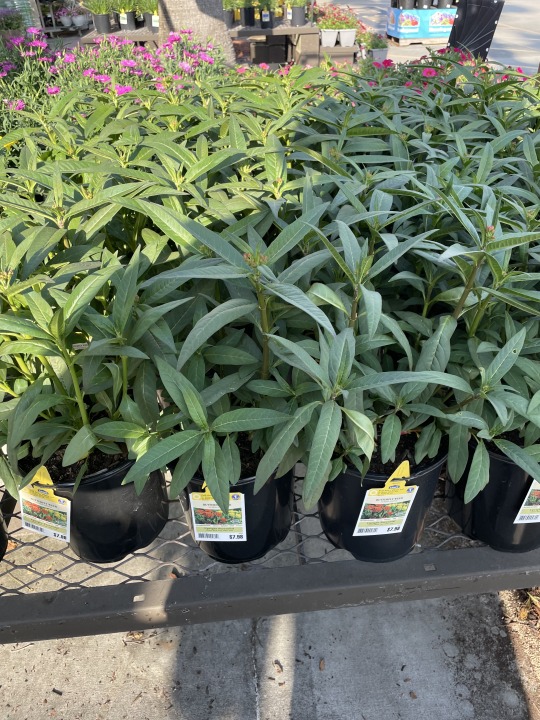
And imagine my surprise when it's being sold right next to Tropical Milkweed and looks almost identical to it.
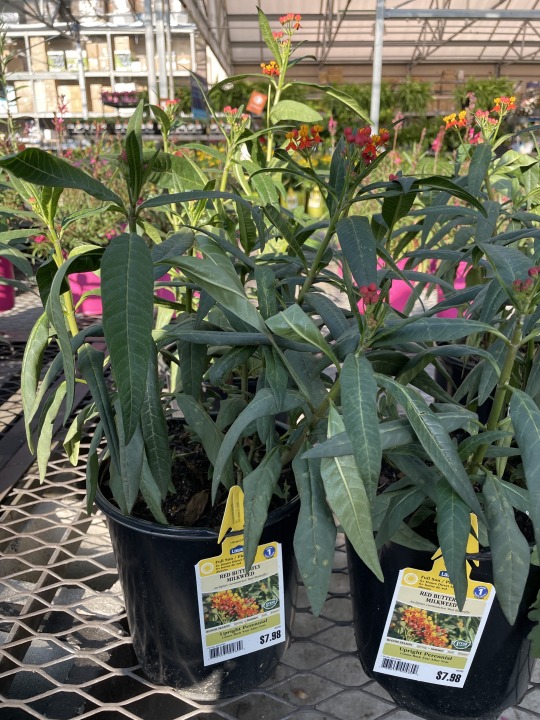
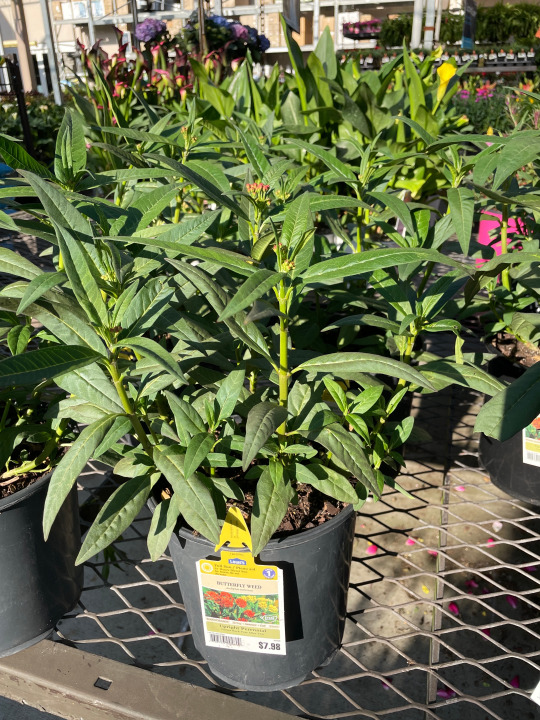
I was immediately suspicious--especially considering the red flower buds on the 'Butterfly weed'. I've grown Tropical Milkweed for several years, and while it's been awhile since I've seen a Butterfly Weed plant outside of a photograph, these definitely didn't look like what I'd seen. Not to mention, I'd only heard of Asclepias tuberosa flowering in orange or yellow--not red. Of course, at the same time, I'm not a professional botanist, and a quick google search did declare that butterfly weed can grow in red (though the images all look like asclepias curassavica to me...).

(Image from the Native Plant Database. Looking at this picture, I should've realized where this was going sooner...)
So I did the reasonable thing and bought two of them. I figured if the red buds somehow turned orange and were actually Butterfly Weed, then I'd be perfectly satisfied. If they turned out to be Tropical Milkweed, well, I simply would give them to my neighbor who's fond of them, or find something else to do with them.
(I feel the need to emphasize; there are a lot of people online who are in the 'if you plant tropical milkweed you're a horrible person and intentionally killing monarch butterflies' camp. I am not one of them; it's not invasive in my area of Florida, it just takes a little bit of extra managing in terms of cutting it back in October/November.)
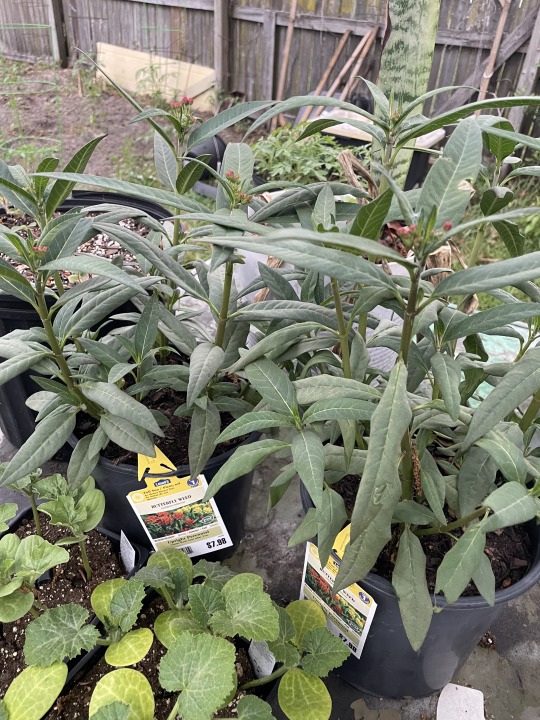
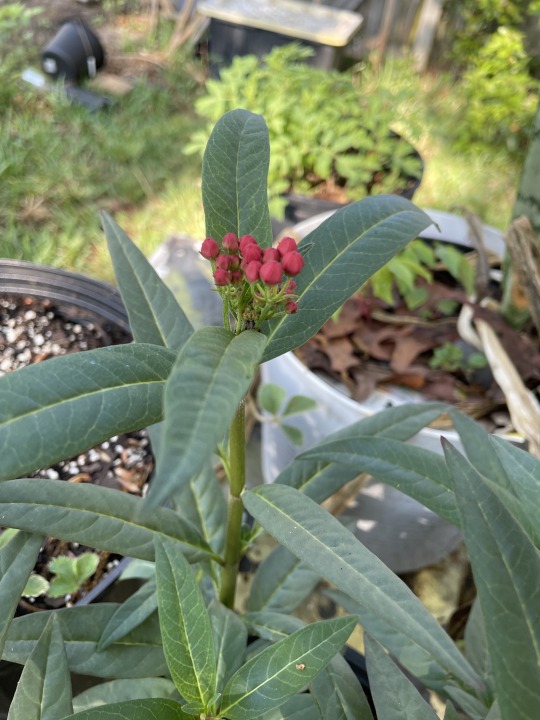
I ended up in the same Lowe's again today, shopping for my mom, and took a peek at their plant selection. Lo and behold, I found the Butterfly Weed, and...

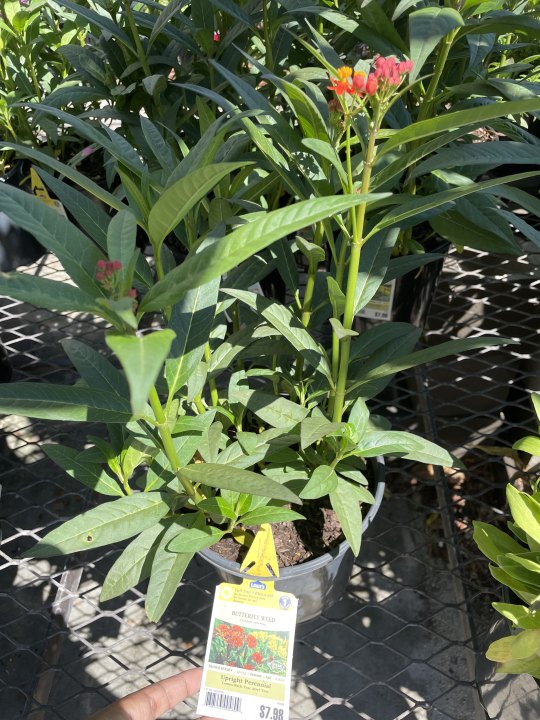
This sure does look like Tropical Milkweed to me, and to others in my gardening server, yet it's still labeled as 'Butterfly Weed.' Also, I didn't see any Tropical Milkweed on any of the shelves--at least, nothing labeled as Tropical Milkweed. Instead, all I saw was Tropical Milkweed disguised as Butterfly Weed.
This is, in my humble pollinator garden enthusiast opinion, a problem. At best, Lowe's--or the company they source their plants from--is mislabeling their plants on accident. Which could cause problems if people are buying the plants and putting them in a place that's not quite the right condition for them, or create severe disappointment if someone's excited to grow the native Asclepias tuberosa only to end up with something else entirely. At worst? Lowe's--or the company they source their plants from--are aware that people want to grow native milkweed and are either unable to or too lazy to grow them, and would rather try to get away with selling Tropical Milkweed--which has been growing increasingly controversial in some gardening circles--and still reap the benefits and profits of selling native milkweed species.
However, I'll be real? I'm not sure what exactly to do about it. So I guess I'm just letting everyone know; if you see 'Butterfly Weed (Asclepias tuberosa)' in your local Lowe's, at least double check. Otherwise, you may plant Tropical Milkweed/Scarlet Milkweed (Asclepias curassavica) instead.
#milkweed#gardening#flowers#pollinator gardening#pollinator garden#Lowe's#tropical milkweed#butterfly weed#asclepias curassavica#asclepias tuberosa#outdoor gardening#flower gardening#ani rambles#out of queue#idk how legible this post is but I hope its at least SOMEWHAT legible yknow?
930 notes
·
View notes
Text
Hi homies anyone wanna help me find cool new exciting native plant species to hyperfixate over research in depth and try to add to my garden?
I'm really into pollinator gardening, especially milkweeds, and I'm going to a native plant sale Saturday but I don't wanna miss a chance to buy a cool plant while I'm there.
I mostly do pollinator gardening, I'm especially interested in host plants but just about anything that flowers would be Cool. I'm in North Florida, for 'species locality' reasons, and I'd be planting in full/part sun areas. Logically I know I could just google native flowers in my region but thats Kinda Overwhelming so I'm down for suggestions of cool plants to direct some attention to.
#gardening#pollinator gardening#native species#native plants#florida native plants#florida garden#gardening advice#ani rambles#out of queue
30 notes
·
View notes
Text
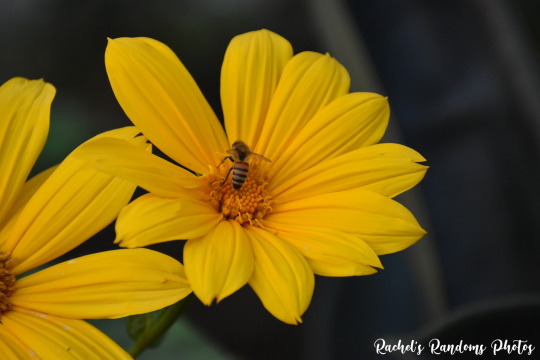
Honey Bee (Apis mellifera) on a Mexican Sunflower (Tithonia rotundifolia)
Taken in my front yard
#honey bee#honey bees#bees#insect photography#bugs#bug photography#animals#animal photography#wildlife#wildlife photography#nature#nature photography#pollinators#photography#florida#florida photograhy#florida photographer#mexican sunflowers#flowers#flower photography#plants#plant photography#nikon camera#nikon photography#nikon d3500#Tithonia rotundifolia#Apis mellifera
1 note
·
View note
Text

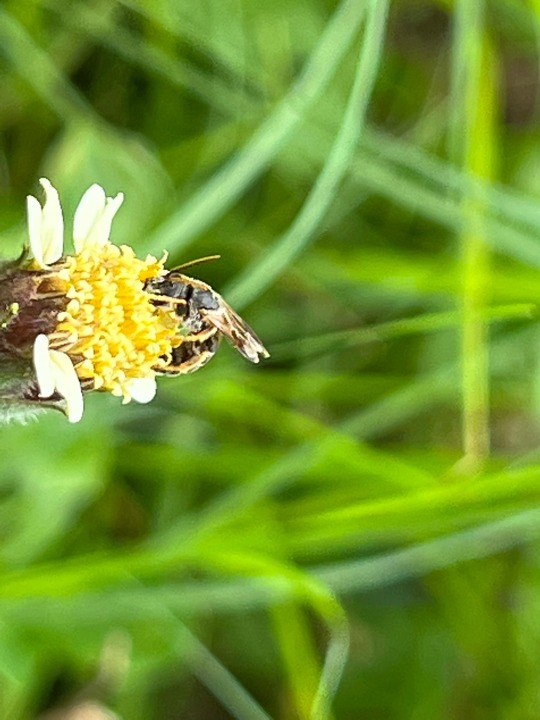
White beggarticks Bidens alba with what I believe is a Poey's Furrow Bee Halictus poeyi. I am not super confident in that observation, so please correct me if I am wrong.
San Antonio, Florida
August 2022
#florida#nature#naturalists#florida wildlife#photography#adventure#nature photography#plants#bugblr#bugs#entomology#entomologists#cool bugs#wildflowers#flowers#pollinators
1 note
·
View note
Photo
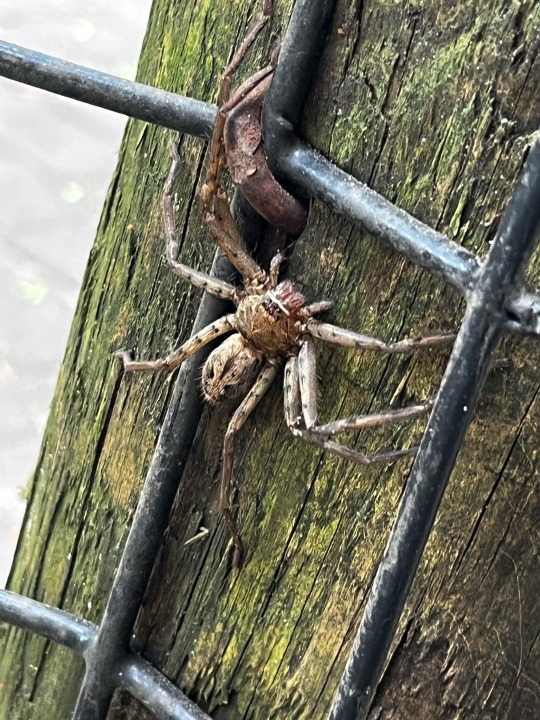
@floridianfireflyfaith submitted: If you remember Henrietta the Huntsman, I found this little friend in the same area a few days ago and she let me get close enough for a legit photo. 💖 She seems to have different coloring from Henrietta so maybe this is one of her aforementioned children??
Also I wanted to ask, is there such a thing as a moth that pollinates? He’s been too quick to take a photo of, but I swear I’ve seen a moth flitting around our plants and sipping from the flowers - dark gray body, small wings, triangular shape… I’m confuzzled. I’m wondering if it’s like a younger long-tailed skipper, which were also flitting about the flowers. North Florida.
I do remember Henrietta!I hope this is one of her children :)
So so so so so so so many moths pollinate. Not all adult moths have mouth parts for eating, but those that do and feed from flowers are certainly pollinators. Sphinx moths are common day-flying pollinators, but there are certainly others. Or butterflies that look like moths.
Younger skippers would not be smaller - baby butterflies are just caterpillars :)
108 notes
·
View notes